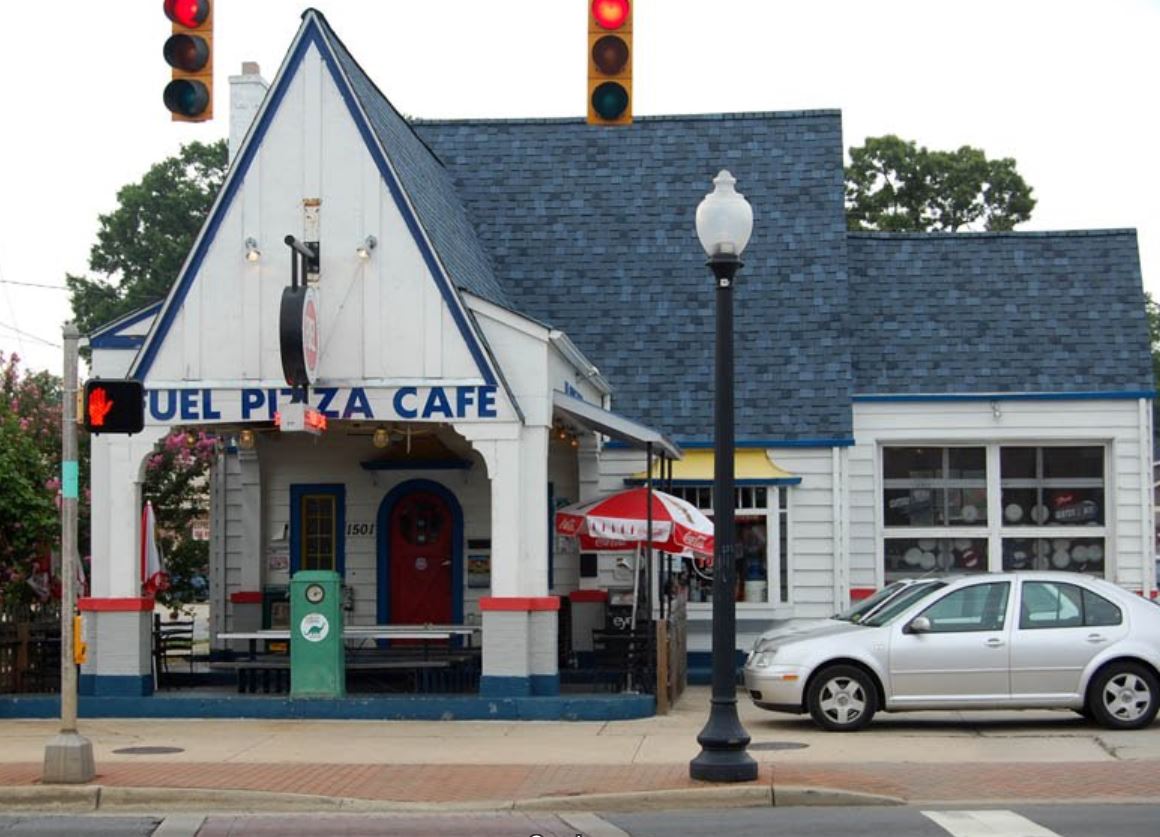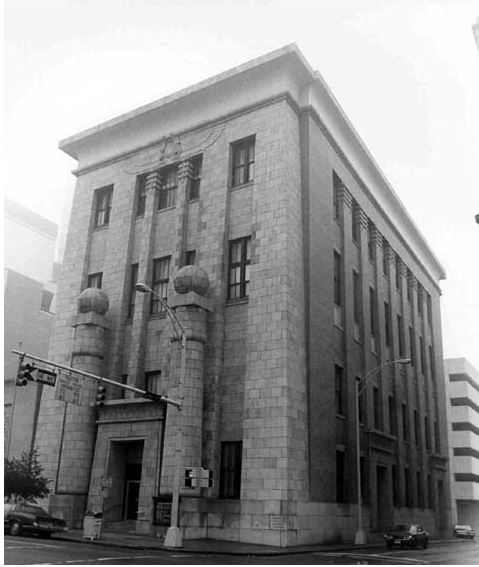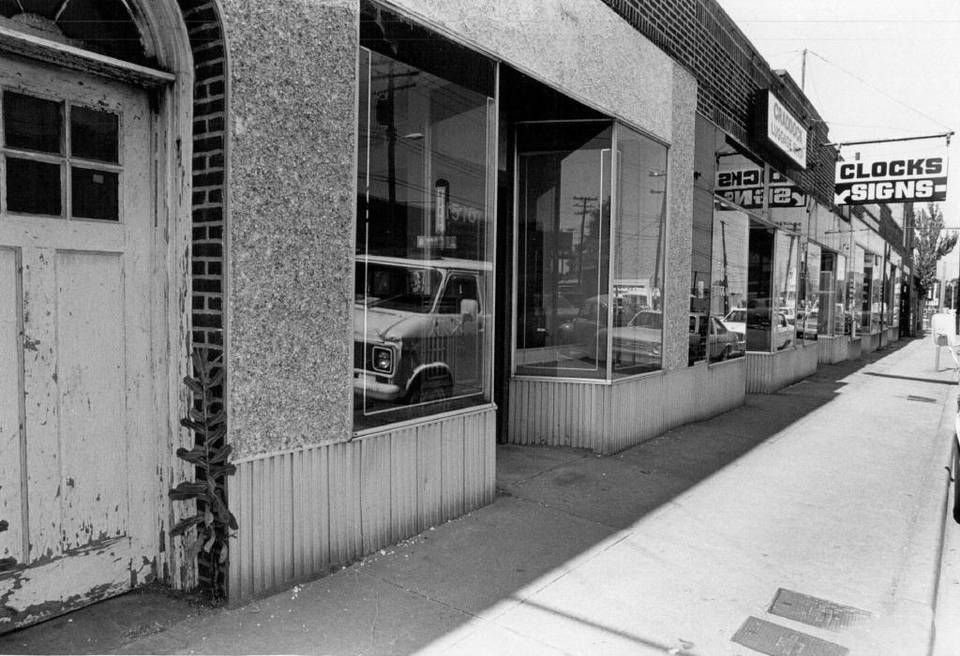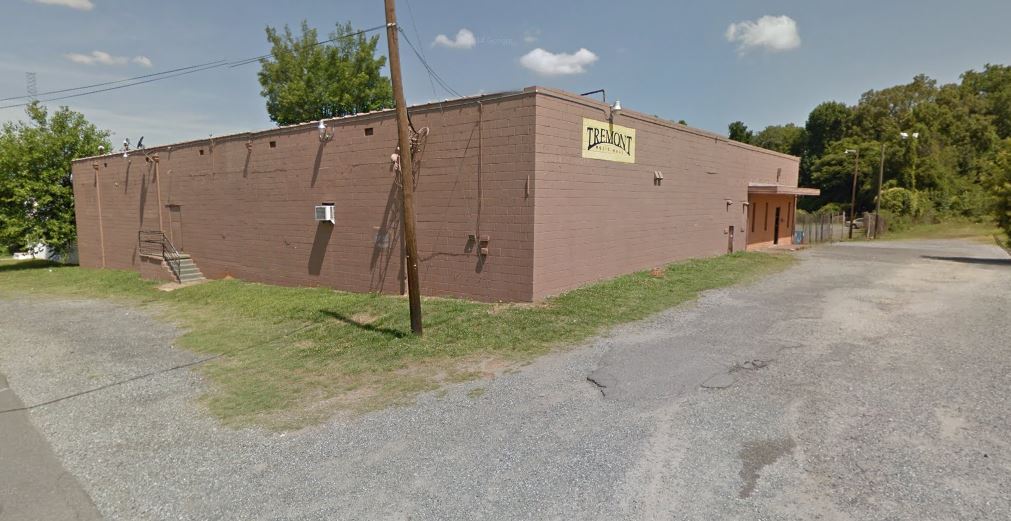Can Plaza Midwood save the places that matter? 4 tools that might help

The following is an edited version of a talk I gave Sept. 23 to a gathering of folks concerned about changes in the Plaza Midwood neighborhood. The event was organized by the group Plaza Midwood Shows Up in cooperation with the Plaza Midwood Neighborhood Association and the Charlotte section of the American Institute of Architects.
The problem, as many Plaza Midwood residents see it—and those in other neighborhoods, too—is that rapid redevelopment, fueled by high demand and high property values, is destroying smaller, older buildings that house well-loved local businesses. The group Plaza Midwood Shows Up fought, unsuccessfully, a rezoning that will mean the loss of Tommy’s Pub on Central Avenue.
In September came news that the South End block holding the popular Common Market and Food Truck Fridays is to be sold for development. A few weeks later it was announced that the Tremont Music Hall in South End will close after 20 years, because the property has been sold for development.
What is happening is a natural phenomenon for cities. Cities change. Always. South End in the 1980s was a forgotten, derelict zone. NoDa was called North Charlotte and a visit felt like entering a time machine. Old photos from the mid-1980s depict the Plaza-Central area as a bedraggled commercial district.
But the changes now are coming so rapidly it can feel like watching a time-lapse camera. And the problem—one with serious implications for local business development—is that what’s being lost are the small places, the local and unique businesses.
[highlight] “Old buildings are a reservoir of affordability.” — Michael Powe, Preservation Green Lab [/highlight]
Older buildings have sentimental value, of course, as well as cultural and even metaphysical value. They do more than evoke our own memories; they remind us of our connection to the greater sweep of time. James Howard Kunstler wrote in Home from Nowhere: “Chronological connectivity lends meaning and dignity to our little lives. … It puts us in touch with the ages and with the eternities, suggesting that we are part of a larger and more significant organism.”
But those unprepossessing old buildings have economic value too. They play an essential role in an entrepreneurial economy. “Old buildings are a reservoir of affordability,” says Michael Powe of the National Trust for Historic Preservation’s Preservation Green Lab. The trust’s report Older, Smaller, Better: Measuring how the character of buildings and blocks influences urban vitality, notes that “older, smaller buildings provide space for a strong local economy.”
Or to quote the great urban writer Jane Jacobs: “Cities need old buildings so badly it is probably impossible for vigorous streets and districts to grow without them. … a good lot of plain, ordinary, low-value old buildings, including some rundown old buildings.”
Her point, like Powe’s, was that start-up businesses, entrepreneurs, artists and artisans need cheap space.

But what is happening in Charlotte neighborhoods like Plaza Midwood, NoDa and South End also reflects something else Jacobs wrote about. In The Death and Life of Great American Cities (1961), Jacobs devoted a full chapter to “Gradual money and cataclysmic money.” Although her remarks were aimed at the vast slum-clearing projects of 1950s urban “renewal,” her words seem applicable to Plaza Midwood. “Cataclysmic money pours into an area in concentrated form, producing drastic changes. … like manifestations of malevolent climates beyond the control of man—affording either searing droughts or torrential, eroding floods.”
Her conclusion: “This is, of course, no constructive way to nurture cities.”
That sweep of speedy development into some Charlotte neighborhoods does seem to threaten a torrential, eroding flood likely to wipe out yet more older buildings. Why is this happening?
1. Charlotte may be big now, but until about 1950 it wasn’t. So the older areas with evocative, historic flavor are few and far between—literally. Starting right about the time Charlotte began its rapid growth, city development patterns became spread out and car-focused, ending the possibility for more Plaza Midwoods or NoDas to be built. Today, those interesting older neighborhoods with a walkable street grid and traditional storefront buildings are in high demand. But the supply is limited.
2. Combine a limited supply with rapid growth. A United Nations study projected Charlotte (and Raleigh) would be the fastest growing U.S. cities from 2010 to 2030. The high demand and low supply is driving up land values in South End, NoDa and Plaza Midwood, among other places.
3. What matters is the value of the dirt. This is stark land economics. Investors buy land when it is cheap, hold it, then sell for a profit. When developers pay a lot to buy the dirt, they can’t make a profit unless what they build can bring in enough money to pay the cost of the land. That means tall buildings or expensive units, or both.

4. Charlotte has an oddly weak civic preservation ethic. I have some theories, but I really do not know why this is. Many other N.C. cities, some of them fast-growing like Charlotte, have preserved far more historic fabric and seem to value it more as a shared civic amenity. Does Charlotte have a more conservative, property-rights ethic? Is it the practical, Scots-Irish Presbyterian heritage, valuing profit over touchy-feely cultural memory stuff? Is it a hidden inferiority complex, a belief nothing really important happened here so why preserve relics of a not-very-distinguished past?
Obviously some historic buildings are preserved. The Charlotte-Mecklenburg Historic Landmarks Commission has a revolving fund that has done much good. But still, much has been lost.
Concerned neighborhoods and residents do have a few options to try to slow that cataclysm of development. None of the tools is a perfect one, and no neighborhood should think it can stop change.
1. Local historic landmark designation
Landmarks are specific buildings or things with historic significance. Elected officials must approve a landmark designation. If landmarked, a property’s owner gets a 50 percent property tax break. But owners can’t make major changes to the property without getting an OK from the Historic Landmarks Commission, an appointed body.
A designated landmark can still be demolished. The commission has the authority to delay a proposed demolition up to one year, no longer.
As with any tool, landmarking has plusses and minuses.
Plusses:
- Provides some protection against demolition by delaying it up to one year. (There is a fine-print provision to acquire a threatened historic property by eminent domain. This power has never been used in Charlotte.)
- Gives property owners a 50 percent property tax break.
- Restoration work is eligible for federal and state tax credits.
- Preserving historic buildings provides an intangible value to the community, demonstrating that some buildings have value beyond “highest and best use” of the land.
Minuses:
- Designation requires a political decision. This can get messy.
- Modest buildings of little historic importance, such as Tommy’s Pub, would have a harder time winning designation.
- Designation limits what owners can do with property and restricts changes.
- Designation can delay demolition up to a year. This is a minus for an owner wanting to sell to a developer.
2. Local historic district
A historic district is not one building but a geographic area with buildings of historic merit. Charlotte has six local historic districts. As with a historic landmark, the Historic District Commission, an appointed body, must OK significant changes in buildings in the district.
As with landmarks, buildings in a historic district can be demolished, but the HLC can order a delay of up to a year. And as with landmarks, elected officials must decide to designate a district.

Note: Being a local historic district is not the same as being on the National Register of Historic Places. Being on the National Register does not prevent demolition, but being in a National Register district can make renovations eligible for tax credits. Some Charlotte local historic districts are also National Register Districts; others aren’t. And some neighborhoods (example, NoDa) are on the National Register but not local historic districts.
Plusses:
- Provides some protection against demolition.
- Creates eligibility for tax credits for restoration.
- New development must be in scale with the rest of the neighborhood, as defined by the HLC, which would discourage high-rises, big box stores and buildings with giant floorplates.
- Preserving historic neighborhoods provides an intangible benefit, demonstrating that some places are worth saving.
Minuses:
- Requires a political decision. Because multiple property owners are affected, often some will oppose the historic district, which can sway elected officials.
- Limits what owners can do with property; significant exterior changes require Historic District Commission OK. (Despite urban legend, the HDC does not care about exterior colors.)
- Can delay demolition up to a year. This is a minus for an owner who wants to demolish, or to sell property to a developer.
- New development must be in scale with the rest of the neighborhood, which would discourage high-rises, big box stores and buildings with giant floorplates. Again, this could be a minus for an owner who wants to sell.
The Historic Landmarks Commission is a county-run agency, while the Historic District Commission is a city-run agency. In many N.C. municipalities the city government runs both historic landmarks and historic districts through one office of historic preservation. That might strengthen Charlotte’s preservation ethic. But we don’t do things that way here.
3. Roll-your-own zoning
Another potential tool is for an area to create and win approval for a special zoning overlay district designed specifically for that neighborhood. Zoning overlay is planner-speak for adding certain requirements atop an underlying zoning. Examples are historic districts and Charlotte’s pedestrian-friendly (PED) and transit-supportive (TS) overlays.
A zoning overlay in theory doesn’t change what you’re allowed to use your property for—residential, business, industrial, etc. But it might, for instance, change how close new buildings must be to the street, or limit building heights, require shopfront retail or change parking requirements.
A part of South End calling itself the Gold District, because of gold mining history, is trying to win an OK for a special overlay for that area only. Supporters say they have special needs beyond the one-size-fits-all city zoning ordinance applies. A proposed text amendment (read it here) will be up for a public hearing Dec. 14.
It’s not clear whether the city planning staff will recommend the proposed overlay, or whether the City Council would enact it. As always, the devil is in the details.
So this potential tool has not, in fact, been proven to be an existing tool. But I think it’s interesting.
4. Own the building
Property owners who want to keep their buildings may do so. They can choose to add protective deed covenants to prevent future demolition, as has been done with Latta Arcade uptown.
Or they can sell to developers.

Opinions in this article are those of the author and not necessarily those of the UNC Charlotte Urban Institute or the University of North Carolina at Charlotte.